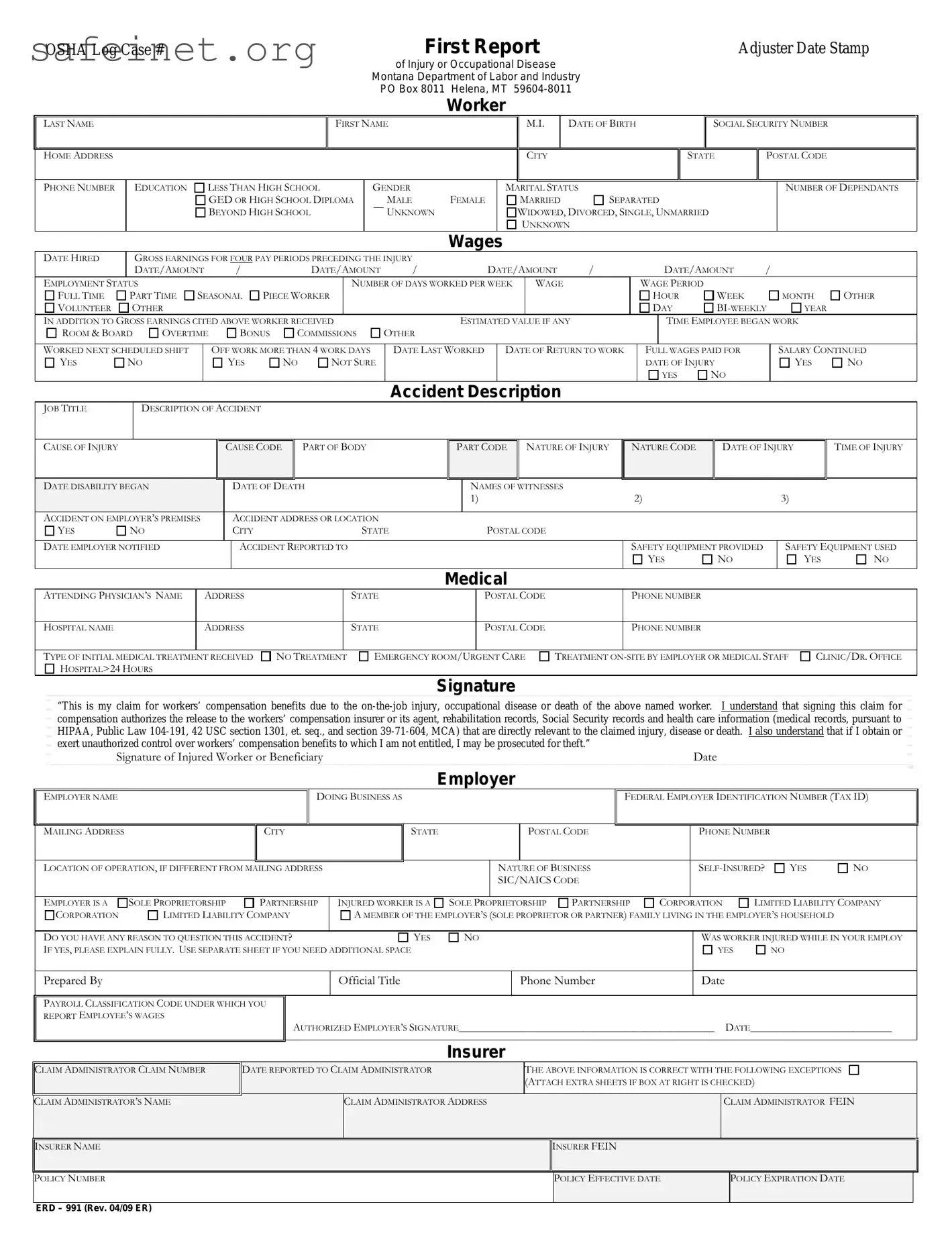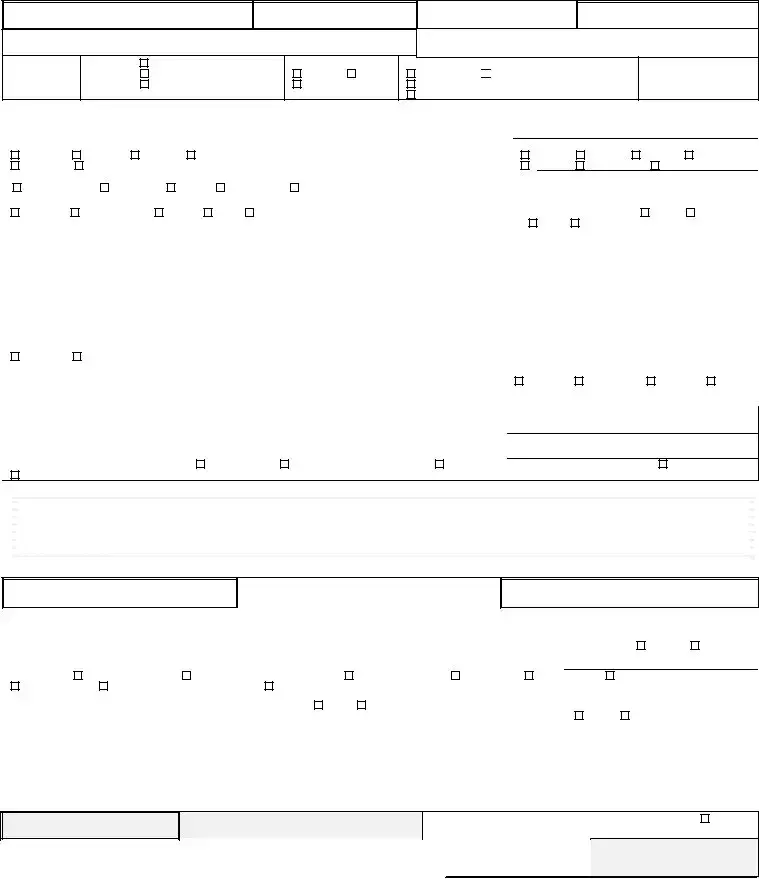What is the ERD 991 form used for?
The ERD 991 form is a document used to report workers' compensation claims related to on-the-job injuries or occupational diseases in Montana. It serves as the first report of injury and helps employers and insurance administrators process claims efficiently.
Who needs to fill out the ERD 991 form?
The injured worker, their employer, and the claim administrator should all be involved in filling out the ERD 991 form. This ensures accurate information is collected from all relevant parties for a complete claim process.
What information is required on the ERD 991 form?
The form requires personal details about the injured worker, such as their name, address, date of birth, and social security number. It also collects information related to the accident, job title, nature of the injuries, medical treatment received, and the employer's details.
How does the employer submit the ERD 991 form?
Employers can submit the ERD 991 form by mailing it to the Montana Department of Labor and Industry. The address is provided on the form. Timely submission is crucial for the processing of the workers’ compensation claim.
What should be included in the accident description section?
In the accident description section, provide a clear and concise account of how the injury or occupational disease occurred. Include relevant details like the job title, cause of injury, and a description of the accident to support the claim.
Can the injured worker decline to sign the ERD 991 form?
While it's possible for the injured worker to decline to sign, doing so may delay or complicate the claim process. Signing the form authorizes the release of necessary records, which is vital for the evaluation of the claim.
What happens after the ERD 991 form is submitted?
Once the ERD 991 form is submitted, the claim administrator will review the information. They will then determine the validity of the claim and communicate with the employer, the injured worker, and other relevant parties about the next steps.



